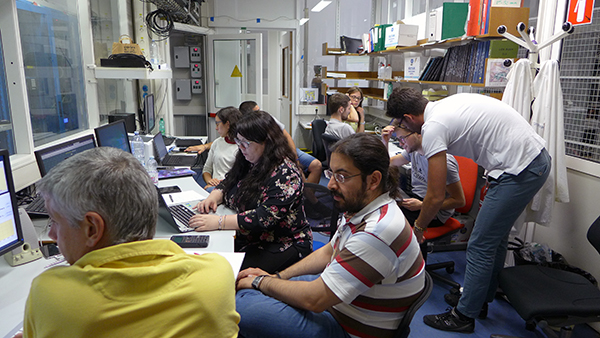- Home
- Industry
- Industry news
- Italian SME uses...
Italian SME uses ESRF to perfect its detector for food safety
05-07-2018
Food industry relies in quality control practices to avoid foreign bodies or contaminants in food. Italian SME Xnext is developing a multiscale detector that will outperform current X-ray detectors. Its scientists have come to the ESRF to characterise it.
Share
X-ray machines in food industry today can easily detect high density foreign bodies, such as metal, lead, stones, bones and glass, hidden inside non-transparent foodstuff and non-transparent containers. There are, however, some challenging materials that go undetectable, such as low density foreign materials like wood, low density polymers, cigarette butt, dry fruit shells and insects, to name a few.
Xnext, an Italian SME, has developed XSpectra, a new generation of X-ray inspection systems that can detect both low and high density, overcoming the difficulties of conventional X-ray machines. The multispectral detector works by making several scans of the material in different energies. Once the researchers put all the scans together, these can reveal the absorption of low energy photons in the material, which translate into low density objects.
In order to improve their detector, the team came to the ESRF's BM05 beamline in the framework of the Calipso Plus collaboration, which grants SMEs access to synchrotrons and X-FEL source. “We are very excited to have companies like Xnext coming here to characterise their products before making it commercially available”, explains Ennio Capria, deputy head of the Business Development Office at the ESRF. “The first contact with the company was through an informal exchange that I had with Prof. Giacomo Ghiringhelli. He is a distinguished representative of our academic user community, and it is important to highlight the crucial role played by the academics to support, with their competences and expertise, this process of innovation-unlocking, where the ESRF can be an active player".
 |
|
The team during the experiment on BM05. Credits: S. Berujon. |
The team came to beamline BM05 to find out precisely how the detector reacts in a monochromatic beam, as well as to characterise the detector itself. “Our experience at the ESRF was extremely positive, from the service to the facility itself”, explains Luca Zanotti, system and algorithm engineer at Xnext. “We still have to analyse the data, but preliminary results already show us aspects that we could improve in XSpectra”.
The detector is in its final phase of development, and it will be commercially available in the coming year.
Top image: Testing XSpectra in a tomato soup facility. Credits: L. Zanotti.



